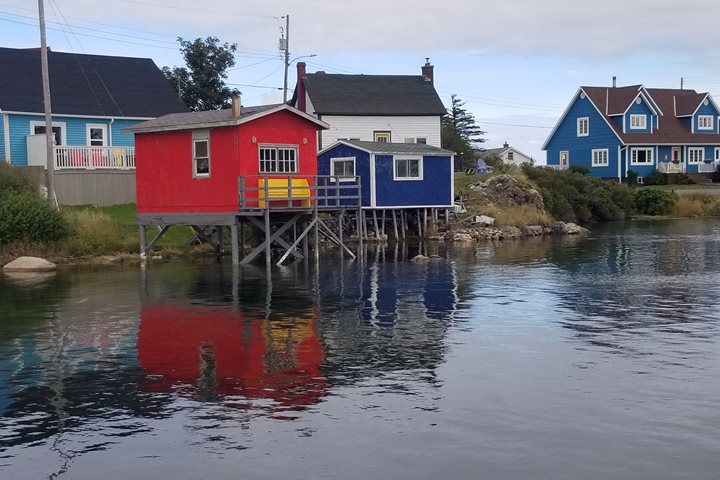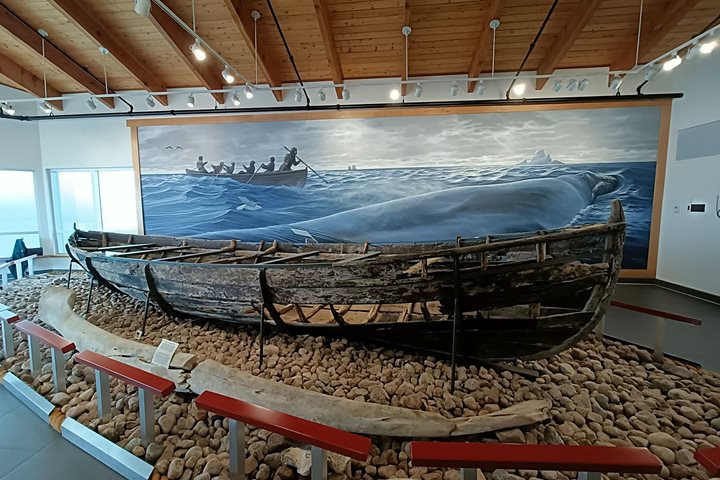Following an overnight passage from Les Îles de la Madeleine, we today had the rare opportunity to visit the center of the Earth. Gros Morne National Park is designated a UNESCO World Heritage site for the important geological story there showcased. The rocks exposed in this spectacular landscape were once part of an ancient ocean, pushed up onto land as two continents collided almost half a billion years ago. More recently (only 12,000 years ago), glaciers covered the region, carving both fjords and mountains when they advanced; as the ice sheet retreated, Gros Morne’s unusual geology was left in view.
Those who walked the Tablelands area of the park today found orange-brown peridotite rock from the Earth’s mantle (the plastic-like, somewhat fluid section of the planet’s interior on which the continents slowly move). Containing many heavy metals, peridotite soils are toxic to plants so the Tablelands remain starkly barren. In a contrasting experience, others explored an adjacent boreal spruce/fir forest, climbing past wind-shaped tuckamore to panoramic, yet partially cloud-obscured, views above tree line. Hiking muddy trails and boardwalks alongside coastal bogs, moose, black bear, and insectivorous plants (pitcher plants and sundews) were spotted. A few remaining late season wild blueberries were a definite treat.
Shifting to a new anchorage during lunch, the afternoon brought further opportunities to take in the area’s natural history. Some toured the striking, steep coast of Bonne Bay and the beaches of the eastern Gulf of St. Lawrence, visiting the Lobster Cove Head Lighthouse and a small aquarium featuring local marine creatures. The ecologically productive fisheries of the Gulf have strongly influenced the livelihoods, lifestyles, and landscapes of western Newfoundland for decades, continuing to this day. Western Brook Pond, an ice-carved former fjord now separated from the sea, offered hikers a new destination with dramatic scenery.
We enjoyed video footage from the shipboard dive team this evening at Recap, with glimpses of charismatic lobster, well-camouflaged flounder, a sea raven, and numerous inquisitive small fish. The expedition’s archaeologists offered a prelude to L’Anse Aux Meadows, our Viking settlement stop for tomorrow. Underway heading north along the island’s west coast, we will transit the Strait of Belle Isle (separating Newfoundland and Labrador) overnight, thereafter exploring the province’s eastern shore.







